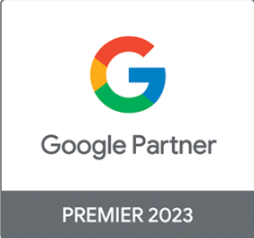What is Local SEO?
Local SEO refers to the tactics for businesses to rank organically within local search (map-pack) results, this forms a vital part of your performance marketing SEO strategy. Similar to E-E-A-T, the pillars of Local SEO are in line with this, namely: Proximity, Prominence and Relevance to the search query. Proximity: how close are you to the location, Prominence: how popular or highly rated a location is, Relevance: how relevant is your listing to the searcher’s query. This is particularly useful for businesses that have a physical presence and serve a geographical area.
What is the Impact of a Mobile-First Approach on a Local SEO strategy?
The majority of users access search engines and websites through mobile devices, which makes appearing in a good position within the map pack and local results that much more important. Since 2015, Google has focused on a mobile-first approach, this means delivering an optimal experience for users who access websites through mobile devices. They then went a step further by introducing mobile-first indexing. What this means is that websites that are optimised for mobile searches will appear higher within the organic search results. If your website is non-responsive or does not follow mobile-first best practice, it may be limited in terms of where you appear within the results.
With featured snippets and the map pack, the layout and real estate available to appear above the fold or in a prominent position becomes even more difficult. Particularly when you take into consideration the screen size of mobile versus desktop.
What are the Vital Performance Marketing SEO Tactics for Local Search?
There are several areas for consideration when it comes to local search and performance marketing SEO:
- How to Optimise your Google My Business Profile
Probably one of the most important aspects of local SEO is an optimised Google My Business profile. This ensures that you show up within the map pack results and improves your local visibility. Key areas of optimisation are:
- Accurate business information: this includes your physical address, contact details, opening hours, business category (coffee shop, as an example), accessibility options (wheelchair access, for example), service options (free WiFi), respond to questions left by users
- Customer reviews & ratings: these are key signs to Google that your business is a trusted organisation. Google takes reviews into consideration in local rankings, they serve the same function as backlinks to your website – a vote of confidence from outside sources. The search engine also favours businesses within the local pack with 4 stars or more. Respond to both positive and negative reviews. This is similar to word of mouth marketing, where users are more likely to trust you from other users / customers
- Photos & visual content: include pictures of your business premises, product or service offerings where possible, it’s an additional optimisation that does also mean you could show up in local image searches.
2. What is a Localised SEO Strategy?
Not unlike a general performance marketing SEO strategy, there are several key areas for consideration when it comes to a local SEO Strategy:
- Keyword Research: research what keywords are relevant to your target audience within your service area and incorporate these into your content. Search volumes and queries, can be vastly different, even from a small regional footprint perspective
- Geo-targeted Landing Pages: in the case of your business having multiple locations, build out specific pages for the various premises, if possible embed a map for each location
- Local Backlinking: through the acquisition of local links, you are demonstrating that you are an authority within your location, these include links from
- On-Page SEO for Local Businesses: include title tags and meta descriptions that are relevant to your local business. In addition to this, there are also schema markups for various business types that you can incorporate into your location pages
- Localised Content Strategy: create location-specific content, driven by the localised keyword research. Make use of user-generated content in your GMB listings. Get testimonials from local guides and incorporate them onto your site pages
Conclusion
With the proliferation of smartphones across the globe, and local search increasing year on year, having a local SEO strategy for businesses with physical locations has become a necessity. Local users are more likely to convert or purchase if they are able to find your business online, you have reviews and appear in a prominent position within the local results.
The key lies in us, as digital performance marketers, understanding the evolving behaviours of mobile users, adapting to search engine algorithms, and leveraging various tools and techniques tailored for local SEO. By prioritising mobile responsiveness, local keywords, and user experience, businesses can enhance their online visibility, attract local customers, and ultimately boost their success in an increasingly competitive marketplace. As technology advances and consumer habits evolve, staying attuned to the dynamic nature of local SEO will be crucial for businesses aiming to stay ahead and connect with their target audience effectively.



